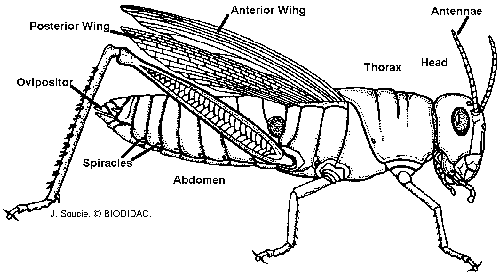Monday, May 30, 2011
Semester 2: Blog # 16
This year in biology was really memorable and I got to say I failed on the dissection because it was difficult for me to take out the external organs from the specimens. Also I wasn't really good at quizzes, even the online ones because I fail at remebering the information. As for my successes I'm pretty organized with the notebook and I'm good at taking notes. The dissections I have done with my partners, that I will never forget because it was fun and interesting how the organs look like in them and also the field trip at the Aquarium of the Pacific was most memorable of all since I get to spend time with the class and experienced lots of things in the train and Aquarium.
Semester 2: Blog # 15
 Crayfish and grasshopper both have antennae, compound eye, anus, stomach, and esophagus. Both of these specimens have the basic organs for them to live basically. Although the big difference is that the grasshopper has an anterior wing and the crayfish doesn't. So crayfish is mostly in the seas and grasshoppers are usually around a field or anywhere in the streets. For crayfish they have a tail or telson so they could swim in the oceans. The grasshoppers have oviposters and the crayfish has a sperm duct. So they have different ways of mating and make offsprings.
Crayfish and grasshopper both have antennae, compound eye, anus, stomach, and esophagus. Both of these specimens have the basic organs for them to live basically. Although the big difference is that the grasshopper has an anterior wing and the crayfish doesn't. So crayfish is mostly in the seas and grasshoppers are usually around a field or anywhere in the streets. For crayfish they have a tail or telson so they could swim in the oceans. The grasshoppers have oviposters and the crayfish has a sperm duct. So they have different ways of mating and make offsprings. Semester 2: Blog # 14
 I would have to say that the grasshopper resembles the most to humans, but theres some that doesn't resmeble with the humans like the antenna, wing, etc. The reason why I think they are most like the humans is because they have eyes, ovary, anus, oviposter, stomach, and esophagus. Just like humans, male and females are different for the grasshoppers. Female has eggs and an open oviposter or penis and as for male they don't have eggs and their oviposter or anus is closed.
I would have to say that the grasshopper resembles the most to humans, but theres some that doesn't resmeble with the humans like the antenna, wing, etc. The reason why I think they are most like the humans is because they have eyes, ovary, anus, oviposter, stomach, and esophagus. Just like humans, male and females are different for the grasshoppers. Female has eggs and an open oviposter or penis and as for male they don't have eggs and their oviposter or anus is closed. Semester 2: Blog: #13
The organs were all different looking from the past dissections I have done so far. Though the most interesting dissection I witnessed is the squid because they don't have a skeleton except for the pen. The ink sank and lens of the squid interested me the most. The pen felt like plastic when you touch it. Basically from all the dissections I did this week it helps me understand how the animals survive or live in the Earth.
Semester 2: Blog # 12
The organs in the worm dissection surprised me because it was a lot different from other's like humans and other animals. The heart of a worm surprised me because it doesn't look like a heart its thin and looks like intestines. So it was surprising how an earthworm has no skeleton so it has a weak body. The organs surprised me the most due to its size and looks. Also the there was a lot of dirt in it's body.
Monday, May 2, 2011
Semester 2 : Blog # 11
The alternation of generations is a life cycle of how plants reproduce sexually. It takes plants through both haploid and diploid generations. The sporophyte is a multicellular diploid plant structure which produces spores through meiotic (asexual) division. The multicellular haploid plant structure is called the gametophyte, which is formed from the spore and give rise to the haploid gametes. A mature sporophyte produces spores by meiosis. Spores germinate and grow into a gametophyte. At maturity, the gametophyte produces gametes by mitosis. Two gametes fuse to produce a zygote, which develops into a diploid sporophyte.
Sunday, May 1, 2011
Semester 2 : Blog # 10
Subscribe to:
Comments (Atom)





